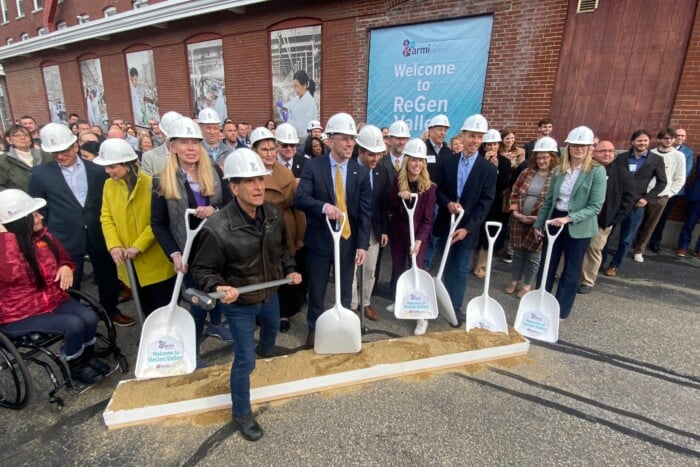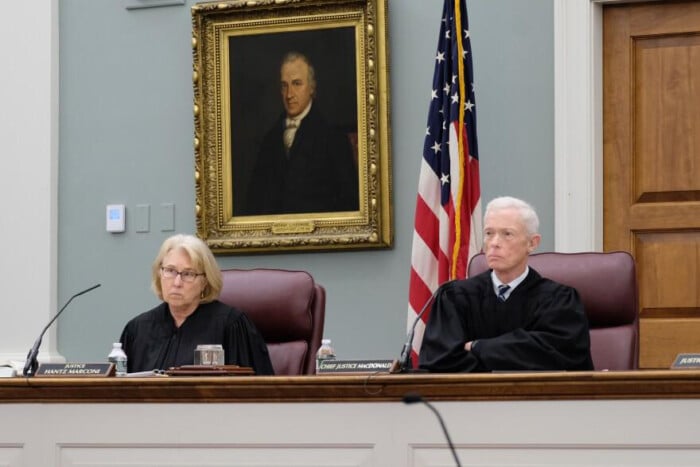
Steve Ahnen
Steve Ahnen joined the New Hampshire Hospital Association as president in October 2008 after serving in various roles at the American Hospital Association in Washington, D.C., for 16 years. The association serves as the primary advocate for the Granite State’s acute care community and specialty hospitals.
Ahnen holds a bachelor of arts degree in political science and German from the University of Kansas, and an executive MBA in health administration from the University of Colorado.
He recently appeared as a guest on the “Down to Business” podcast with NH Business Review’s editor, Mike Cote, and managing editor, Amanda Andrews. This article was adapted from the interview. Listen to the podcast at nhbr.com or on your favorite streaming service.
Q. You spent 16 years in Washington with the American Hospital Association, and more than that here. What brought you to New Hampshire, and how does it compare to working at the national level?
A. Working in Washington was a great experience and opportunity. But we often spent more time in Washington arguing over the size and shape of the table than we did the problems that we were trying to address.
As I thought about moving out of Washington and looking at different parts of the country of where I might want to go, I had the opportunity to see regions of the country, and many were very polarized.
My experience in New England was very different. New England didn’t necessarily seem to run to government to solve problems. They didn’t run away from government, but they tried to find ways to partner, to work together. How do we solve problems? Sometimes government can help. Sometimes government gets in the way, and things should be done in the private sector.
New Hampshire was a very unique opportunity. It was a state that was small enough that you could put 26 to 30 hospital executives around a table and try to come to consensus on some big challenges. That’s certainly what we’ve tried to do since I’ve been here.
Q. Colleges have been working directly with hospitals to increase the health care workforce. What are the challenges that you’re still seeing in that regard?
A. We have had a workforce challenge for many years prior to the pandemic; the pandemic certainly exposed those and has exacerbated them. Workforce shortages and vacancies have come down a little bit since the pandemic. They’re still significantly high. We have a vacancy rate of almost 17% for nurses. That’s over 600 vacancies in hospitals across the state.
That means we have to bring temporary contract traveler staff so that we can meet the demand in patient care. And it’s not just nurses; it goes across the spectrum. That drives up the cost of providing care. We’ve seen labor costs go up about 36% since the pandemic. I don’t necessarily see that turning around anytime soon as we continue to see significantly high demand for care in New Hampshire.
There was a study that came out of UCLA earlier this year that tracked nationally that hospital capacity prior to the pandemic was about 64%. Since the pandemic, it’s 75%. Well, what we’re seeing in New Hampshire is closer to 90% plus.
It’s workforce shortages out in the community. People can’t access care on an ongoing basis. Maybe they don’t have a primary care physician. Maybe they can’t get in to see a specialist. And so those conditions worsen and they end up in the emergency room.
But it’s also a problem on the back end.
Nursing homes, skilled nursing facilities, home health agencies struggle with staffing, so when a patient is ready to be discharged and they don’t need inpatient care anymore … we can’t move them.
The other piece of that is we’re no longer getting reimbursed for that patient who no longer needs hospital level care, so we’re losing out in that sense.
Q. Cost pressures have been pushing consolidation among hospitals, which is affecting rural areas. What do you think the state needs to do?
A. I think we need to make some stronger investments in (maternity, women health) but we also need to find ways to partner and collaborate. Smaller hospitals can work with larger hospitals who offer those services.















